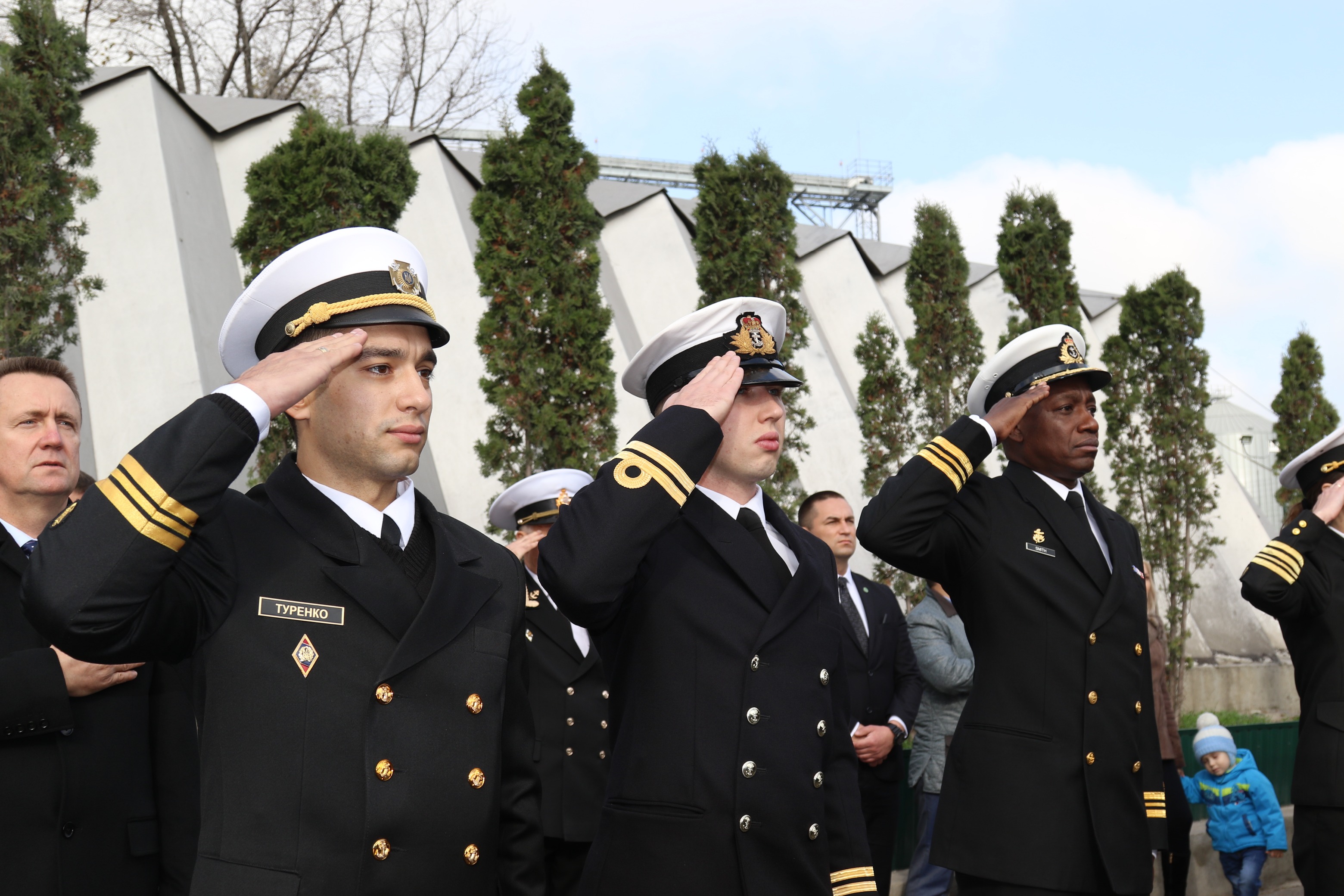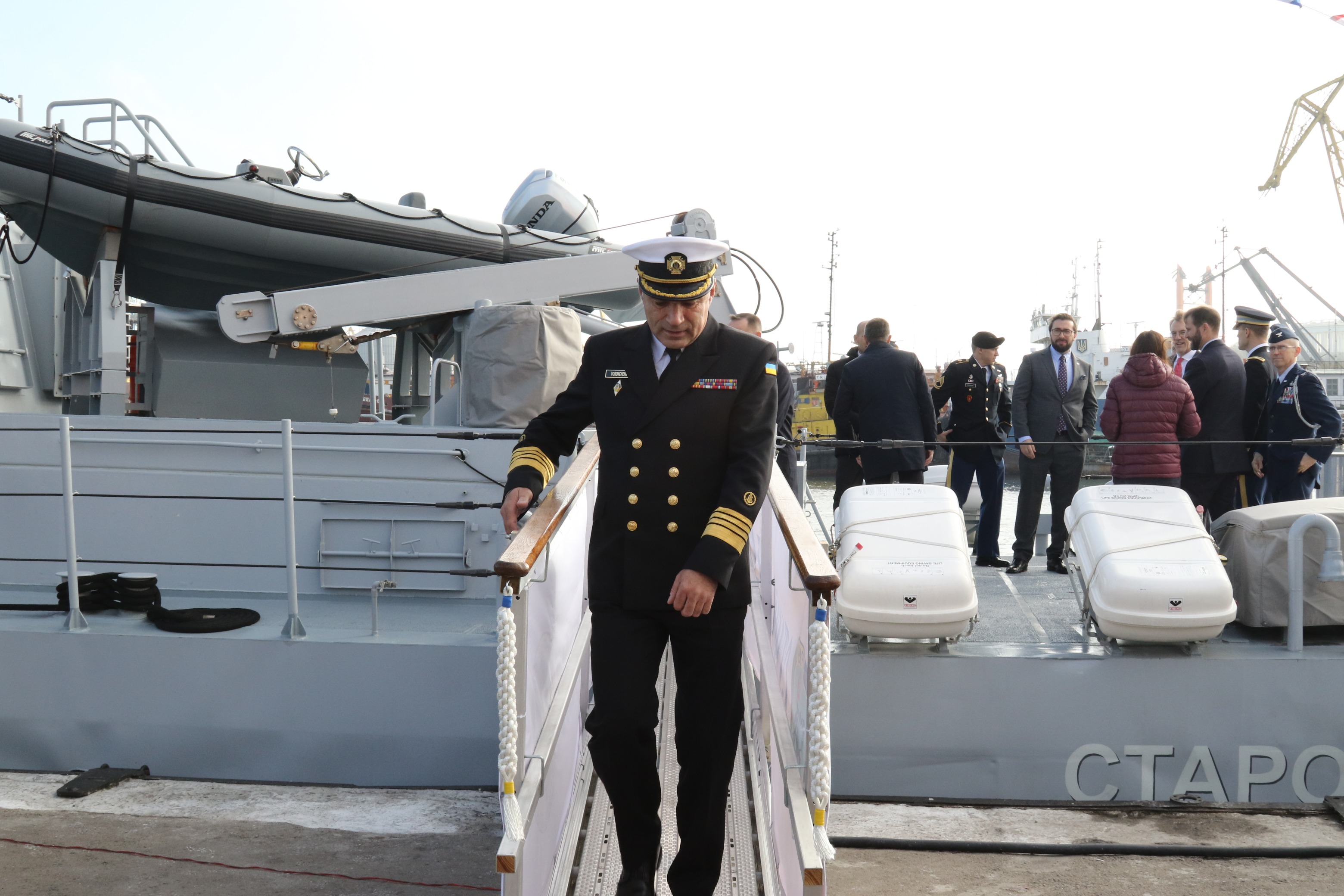Two Island-class patrol boats granted by the United States Coast Guard have been officially accepted for service by Ukraine’s navy, the country’s Defense Ministry reported on Nov. 13.
During a ceremony in the Odesa military harbor, the vessels raised the Ukrainian flags under their new names: R190 Slovyansk (previously named WPB-1323 Drummond) and R191 Starobilsk (earlier known as WPB-1321 Cushing).
“The patrol boats received from the U.S. have been named in tribute to the cities of Ukrainian Donbas — Slovyansk and Starobilsk,” the Ukrainian military said.
“These names eternalize the memory of Ukraine’s killed defenders who were originally from those cities: seaman Oleksandr Veremeyenko and senior seaman Stepan Kryl from Starobilsk, as well as seaman Roman Napryagl and senior seaman Serhiy Mayboroda from Slovyansk. They gave their lives in the name of Ukraine’s independence and European future.”
Starobilsk and Slovyansk arrived in Odesa from the Baltimore port on Oct. 21 after years of bureaucratic hurdles and a 17-day trip across the ocean.
According to Joseph Pennington, a representative of the U.S. diplomatic mission in Ukraine, the U.S. Coast Guard is set to provide Kyiv with three more decommissioned Island-class boats to help protect Ukraine from Russia’s growing appetite in the Black and Azov seas.
The process of bringing the two boats to Ukraine started as far back as 2014, with Ukraine’s general public unaware of the transfer proposed by Washington.
Only in late March 2018 did the Schemes journalism project revealed the transfer that had remained stalled for four years due to what they believed were bureaucratic obstacles bred by Ukraine’s government. According to the investigation, the Ukrainian military was ready to accept the boats as far back as 2015, and the only remaining step was for the Ukrainian Cabinet of Ministers to issue a decree giving the green light for the transfer.
Nonetheless, the decision was been delayed for years to no result.
The Scheme’s sources in Washington claim the transfer was intentionally hog-tied under claims that it “contradicts the mercenary interests of Ukraine’s leadership.” The journalists accused then-President Petro Poroshenko of dragging the deal down in order to prevent his Kyiv-based shipyard, Kuznya Na Rybalskomy, from potentially losing government contracts to produce Gurza-class gunboats for the Ukrainian navy.
Poroshenko strongly rejected the accusations. Nonetheless, it was only after the Schemes revelation that the transfer started gaining progress. In September 2018, the Ukrainian Cabinet of Ministers eventually greenlit the deal, and by the end of the month, the U.S. Coast Guard handed the vessels over to Ukrainian naval command in the Baltimore port.
The U.S. assistance to Ukraine came at no cost, although Kyiv was still to spend some $10 million to transport the boats to Ukrainian shores and to reactivate, repair and rearm them for full-fledged service. In September 2019, the U.S. Coast Guard also provided a training course to the boats’ new Ukrainian crews.
Slovyansk and Starobilsk are capable of reaching speeds up to 29.5 knots (54 kilometers per hour) and hold crews up to 18 members, including three commanding officers. They have the cruising range of 5,360 kilometers and are capable of staying self-contained in the sea for five days.
Both of them were commissioned in 1988 and were operated by U.S. Coast for nearly three decades.
Despite that, the boats enter their new period of service in good condition, according to Ukraine’s navy.
Under the American flag, Slovyansk participated in a number of operations in the Gulf of Mexico and the Carribean Sea, including search and rescue missions, interdiction of illegal migrants and drug smugglers and law enforcement at fisheries.
At varying times, she was based at Port Canaveral, Key West base and Miami Beach. In 1992, 1994, and 2005 her crew was awarded the U.S. Coast Guard’s Meritorious Unit Commendation for their role in safe interdictions of thousands of Haitian and Cuban immigrants at sea. Her last homeport as an American military vessel was San Juan, Puerto Rico.
Starobilsk was used to conduct patrol missions around the U.S. east coast and was based in Atlantic Beach, North Carolina, until 2017.
According to the military, Slovyansk and Starobilsk will be involved in the protection of maritime traffic, ports, communications, patrolling Ukraine’s exclusive economic zone, facilitating the alignment of land forces, guarding the country’s maritime border and escorting naval convoys.
Besides, the Ukrainian navy added, the new boats are resilient enough to be engaged in operations against piracy, illegal migration and smuggling as well as in search-and-rescue activities in the Black and the Mediterranean seas.



